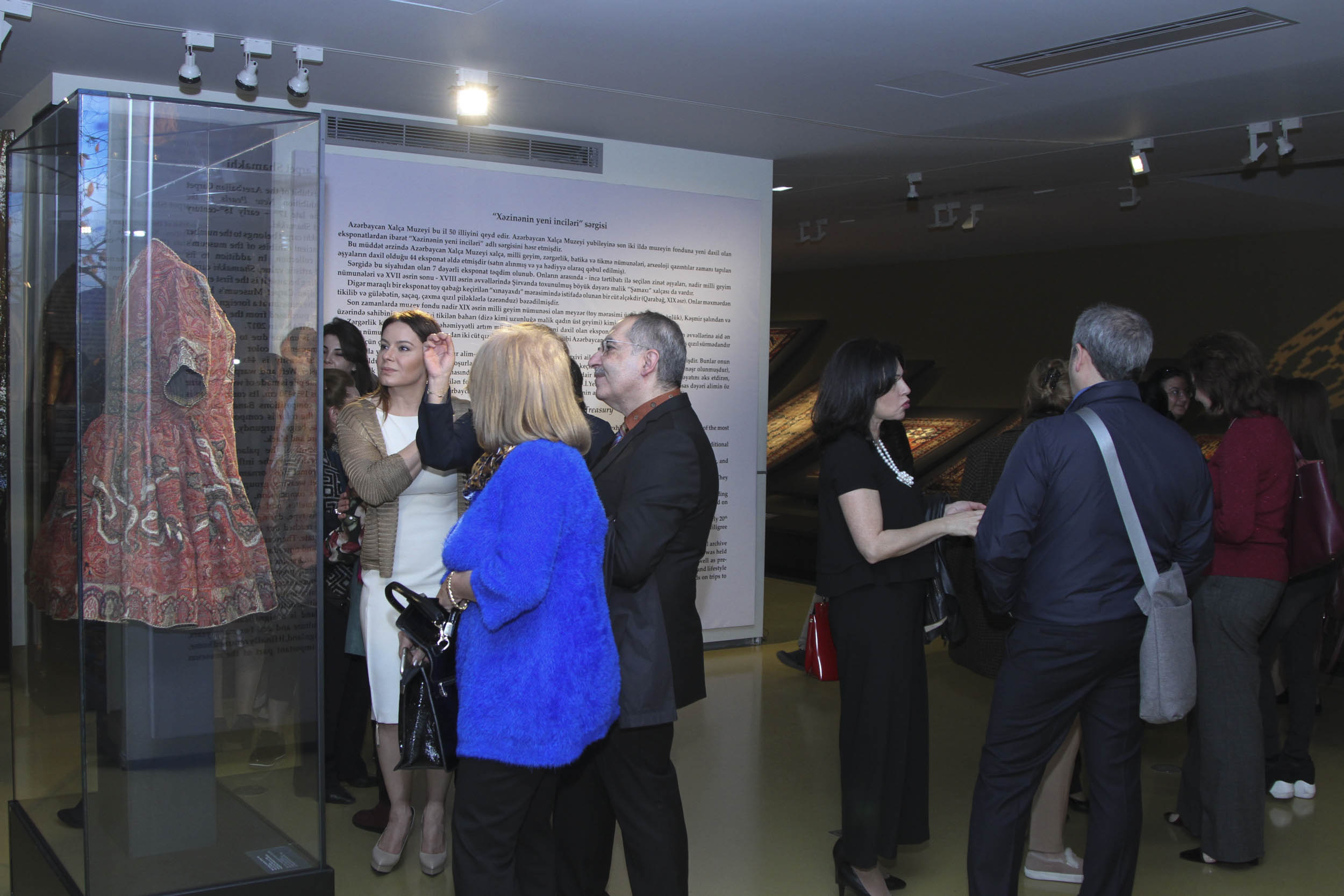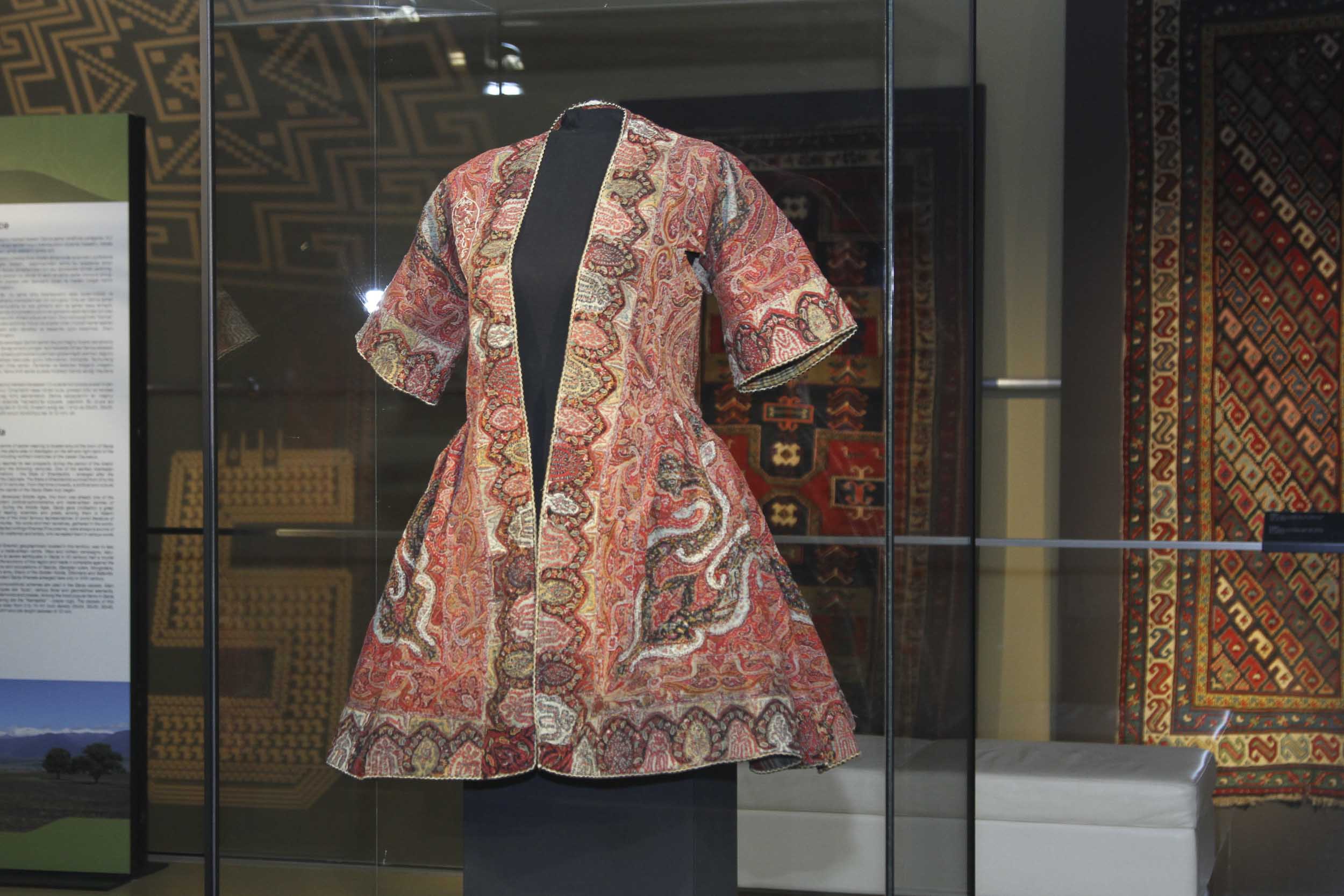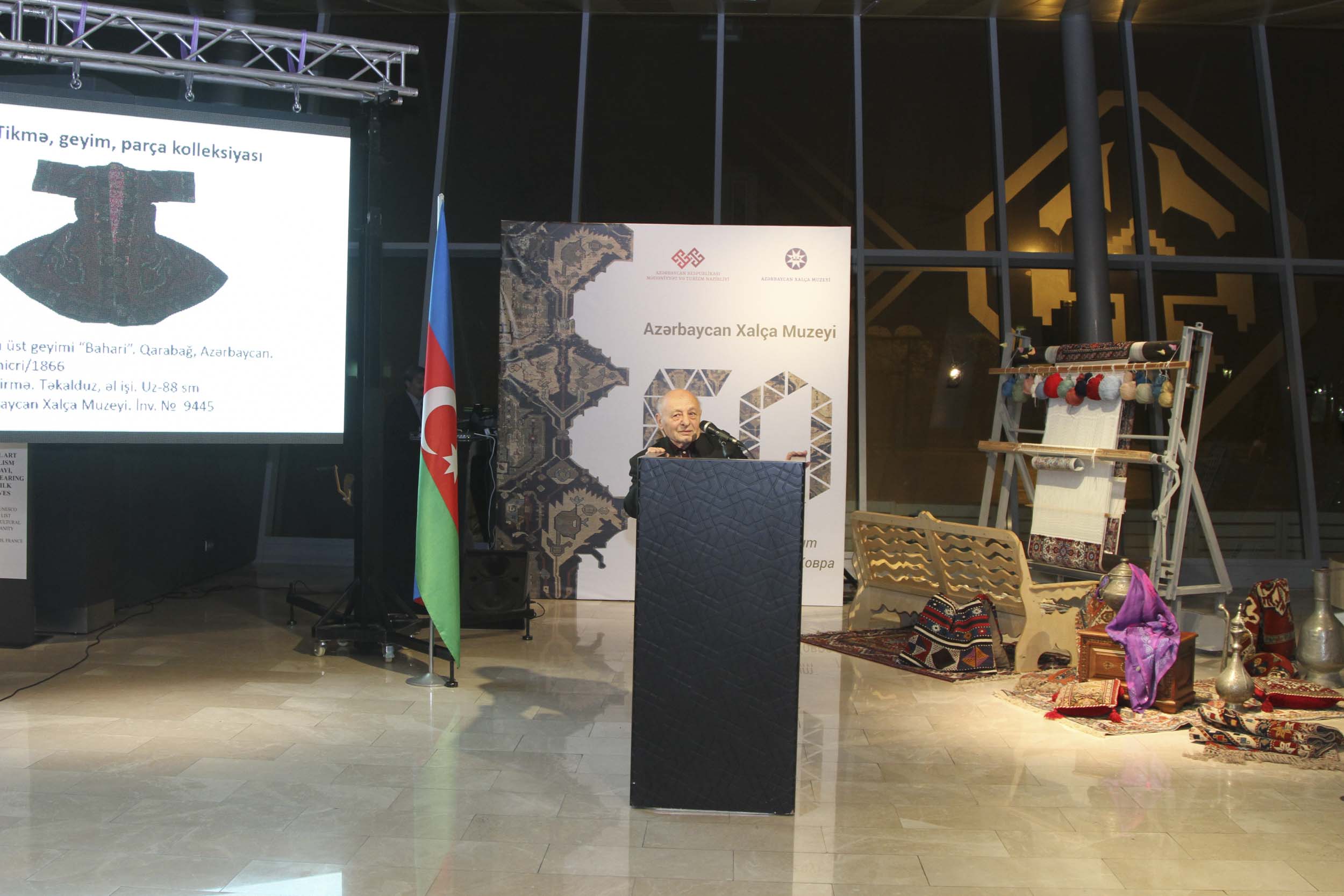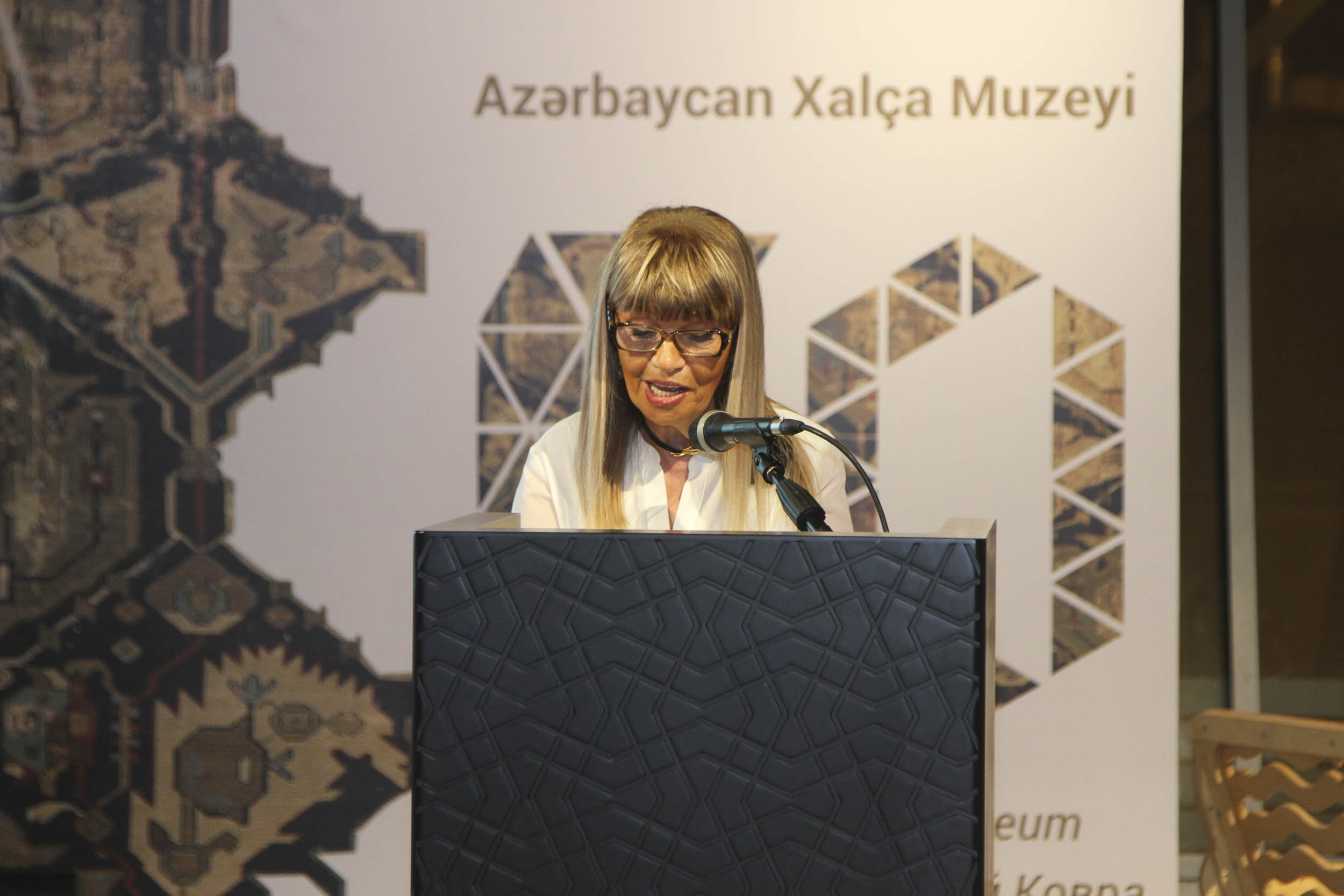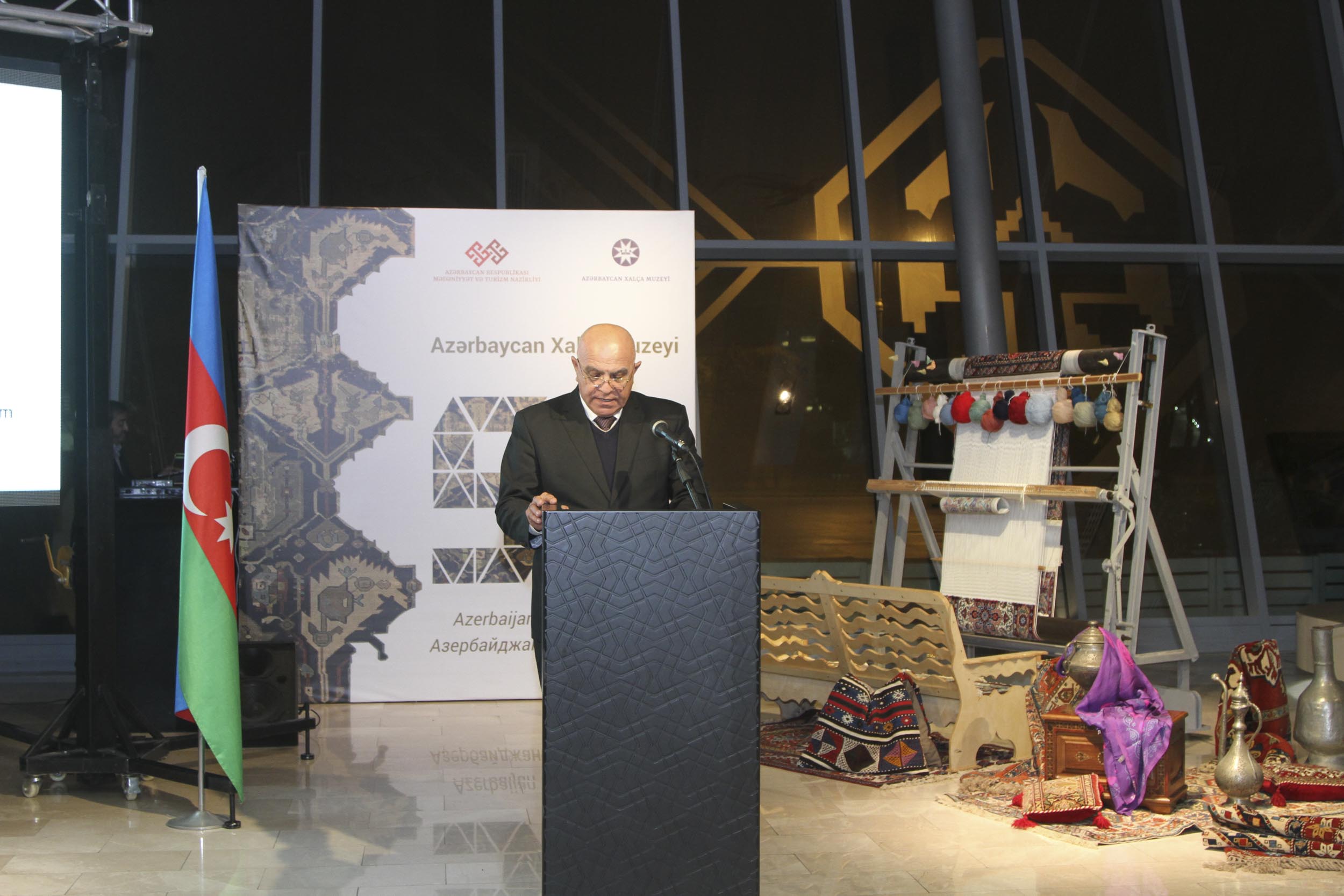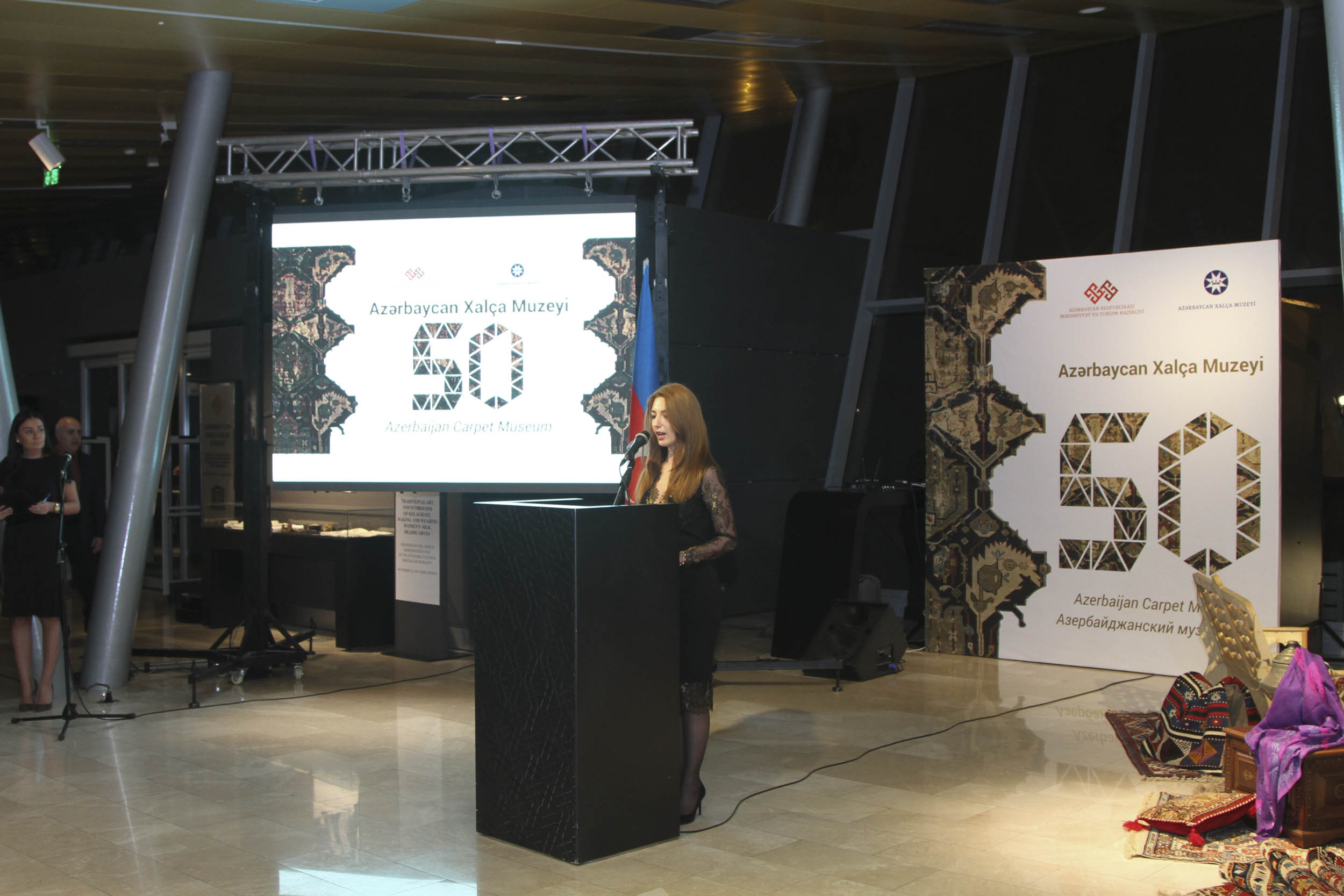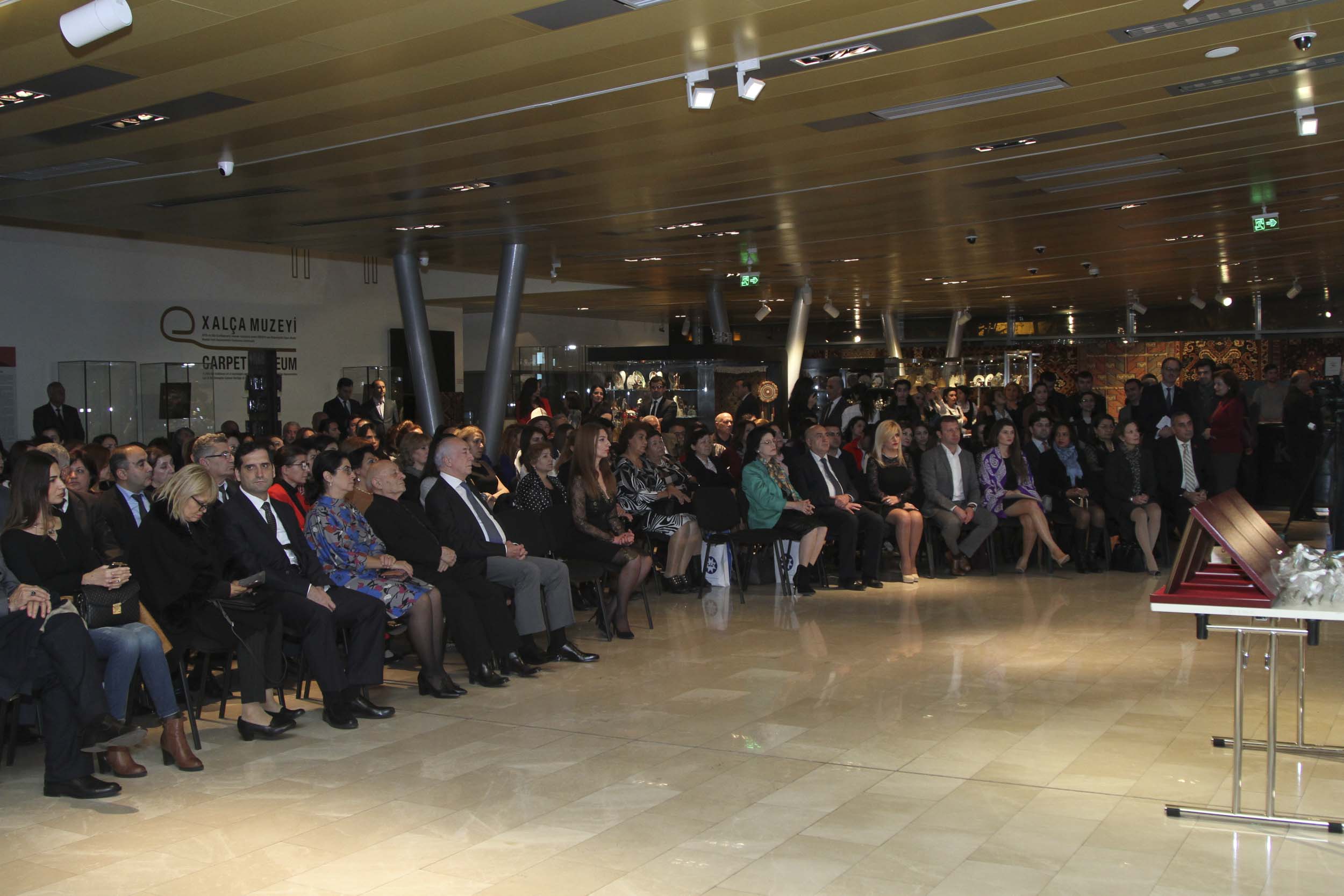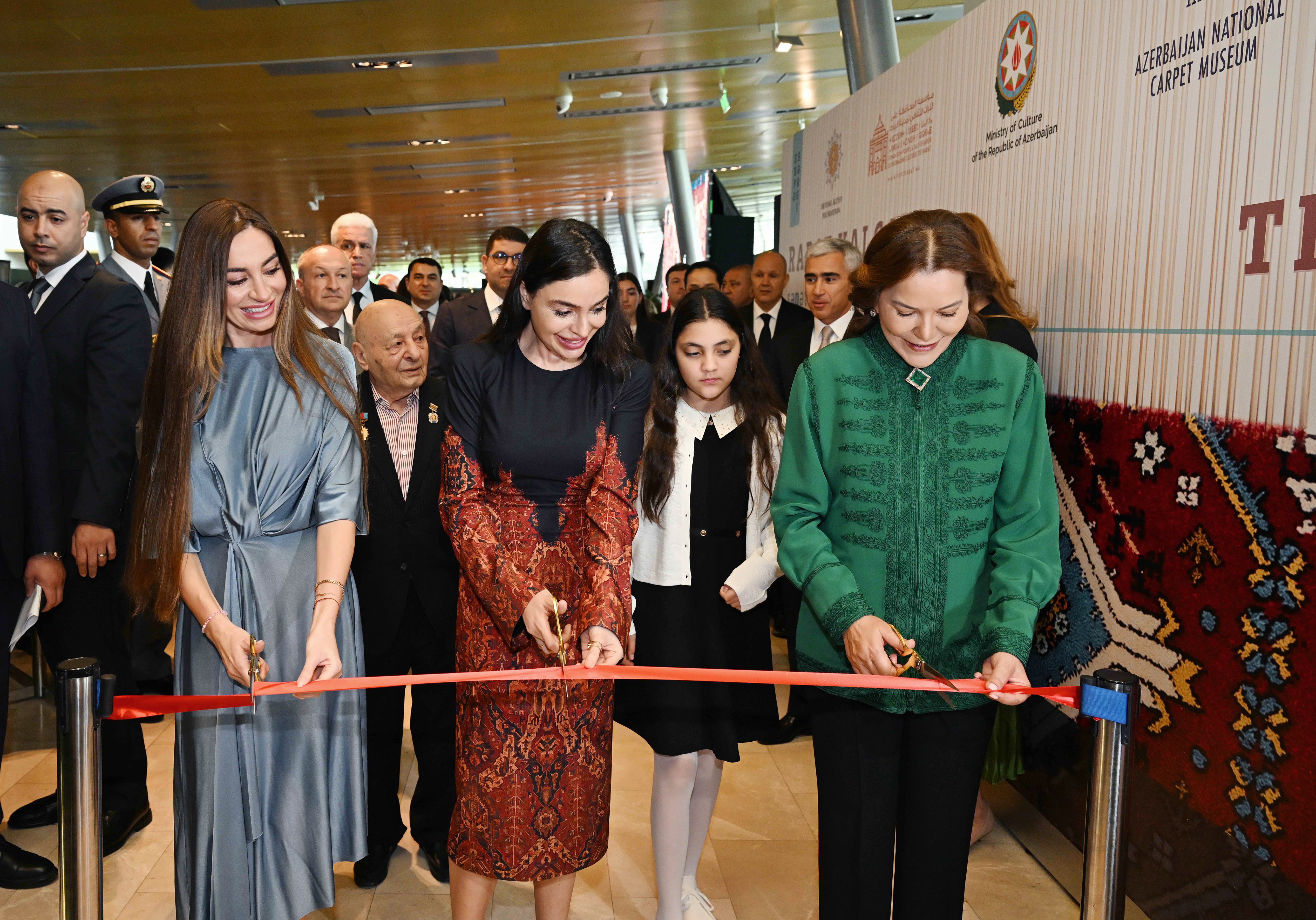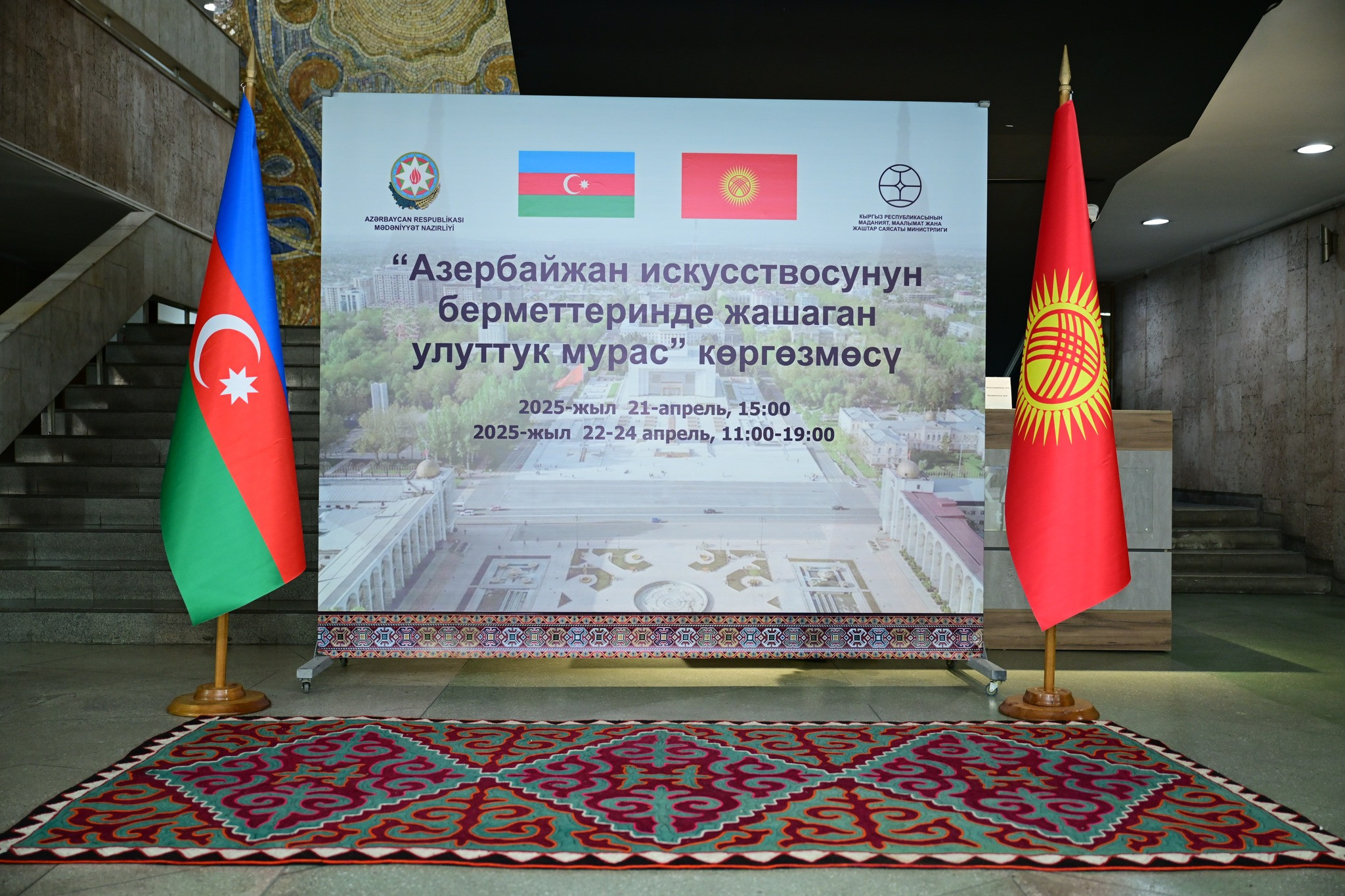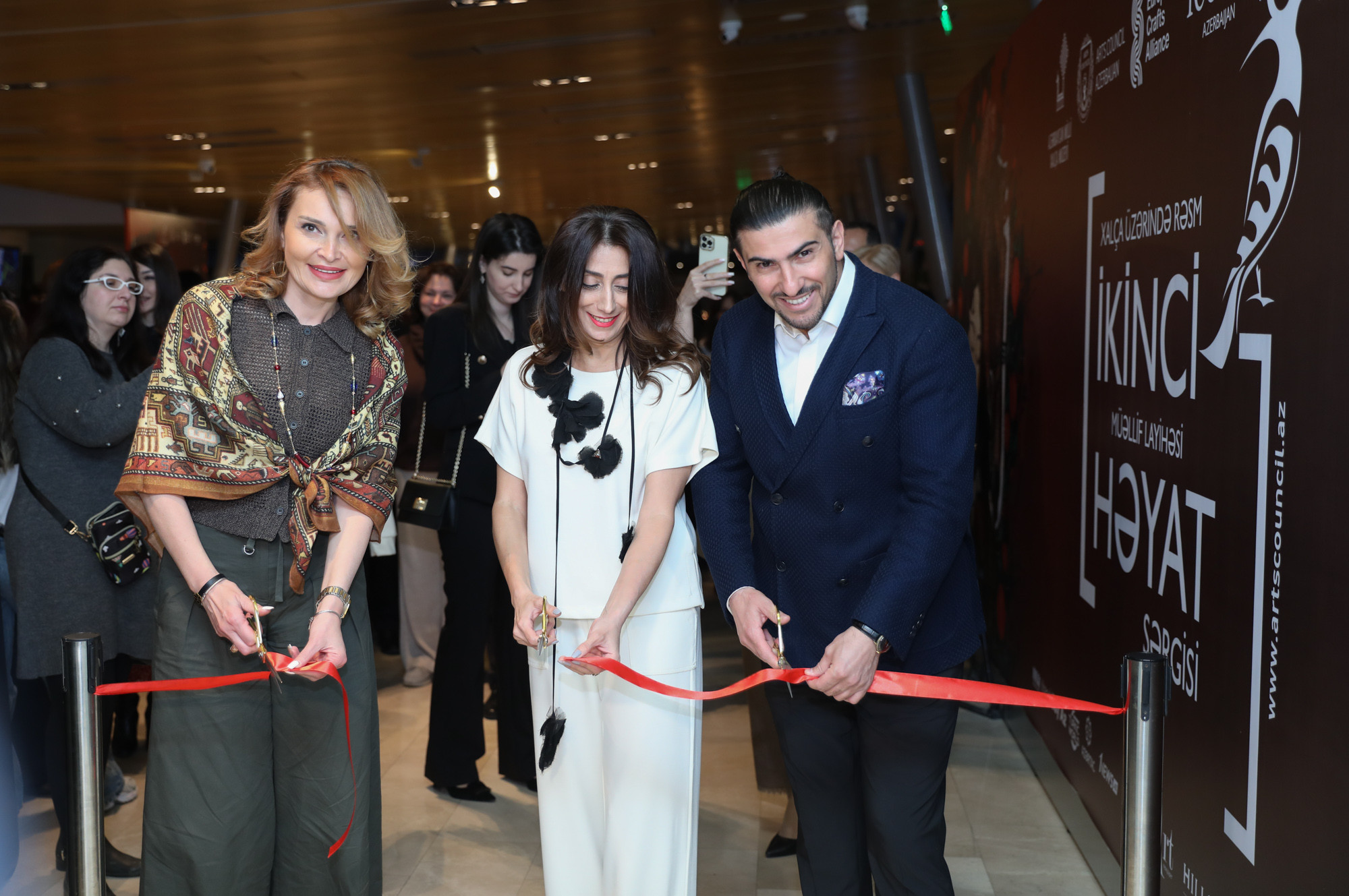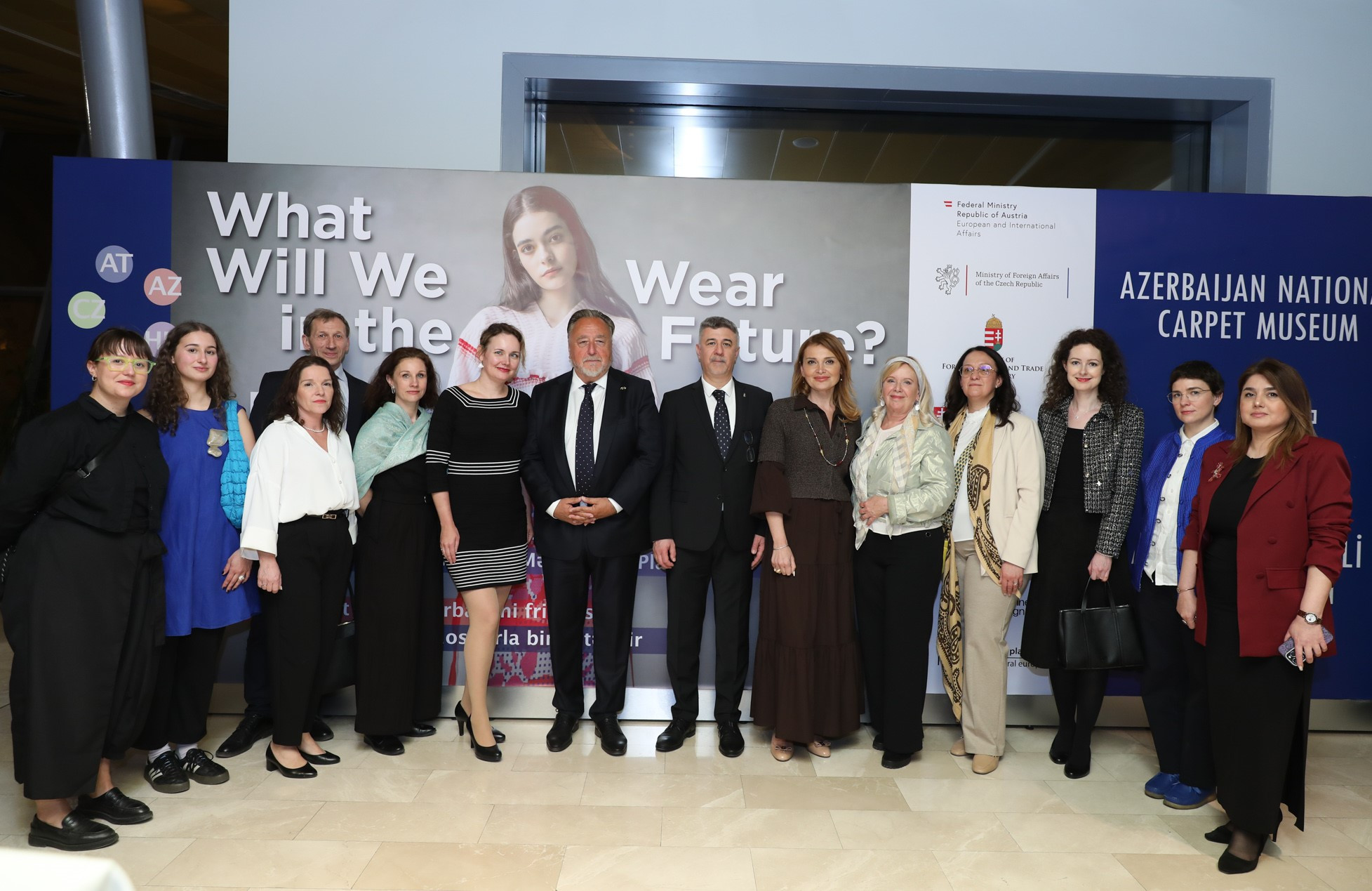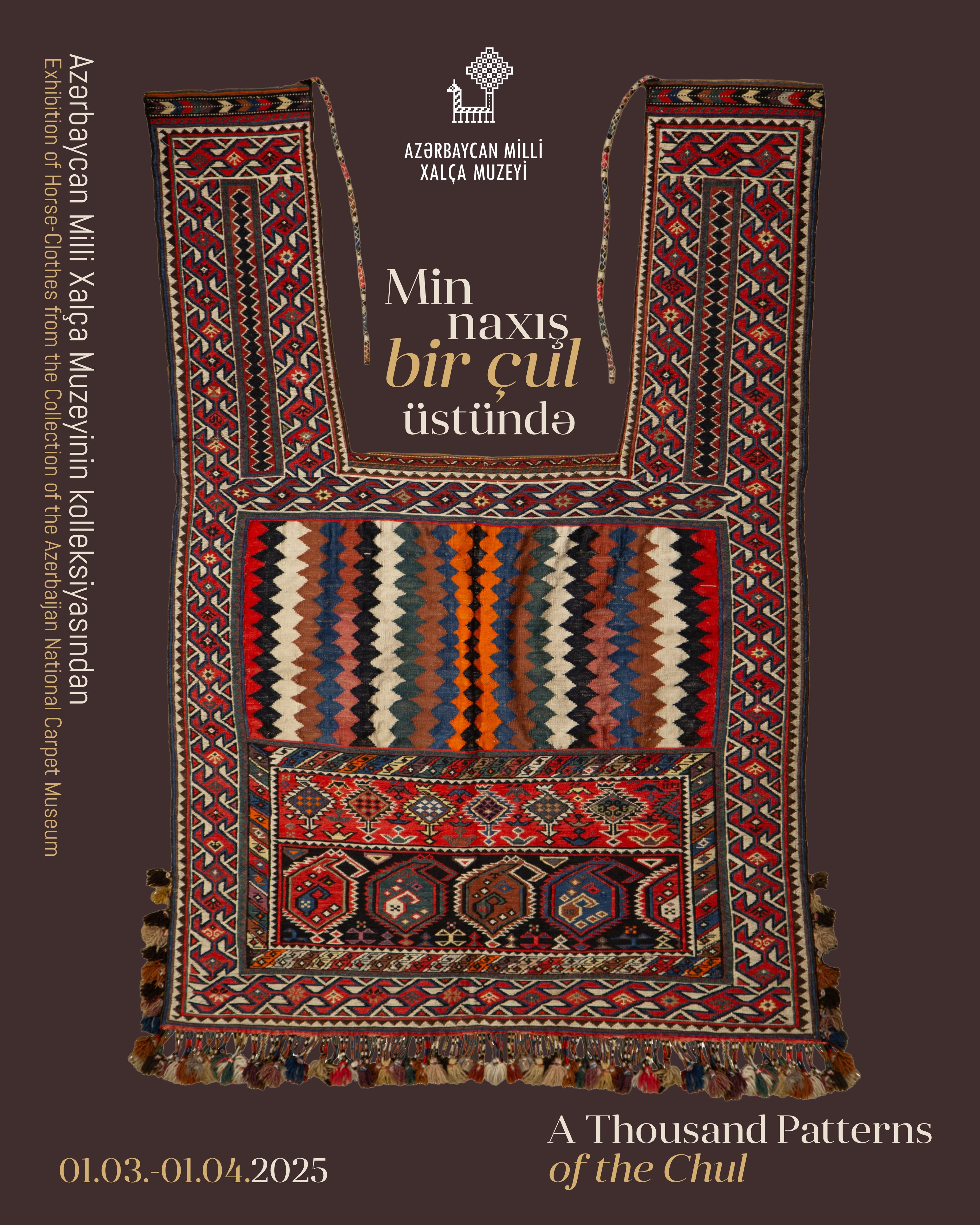Azerbaijan Carpet Museum is 50: Exhibition “New Pearls of the Treasury”
Azerbaijan Carpet Museum is 50: Exhibition “New Pearls of the Treasury” The exhibition “New Pearls of the Treasure”, where were presented the most valuable new exhibits received by its fund over the past two years ‒ that is, from the time when a new strategy for collecting museum collections was developed here, ‒ was one of the anniversary events of the Azerbaijan Carpet Museum. Abulfas Garayev, Minister of Culture and Tourism of Azerbaijan, Shirin Melikova, PhD in Arts, Director of the Azerbaijan Carpet Museum, President of ICOM Azerbaijan National Committee, Academician Omar Eldarov, People’s Artist, Rector of the Azerbaijan State Academy of Fine Arts, Professor Vidadi Muradov, Chairman of the Board JSC “Azerkhalcha”, Head of Carpet Research Department at the Institute of Archeology and Ethnography of ANAS, Professor Roya Tagiyeva, Doctor of Arts, and others made a speeches at the opening of the exhibition. Over the past two years, the Azerbaijan Carpet Museum has received (purchase and donation) forty four exhibits, including carpets, traditional clothing, and jewelry, samples of embroidery, batik, and items from archaeological excavations. The exhibition features seven valuable exhibits from this list. Jewelry, distinguished for its fıneness, rare items of traditional clothing, and Shirvan carpet “Shamakhi” of the great value of the late 17th ‒ early 18th century, are among them. The “Shamakhi” carpet belongs to the number of the most ancient exhibits of the museum’s Pile Carpets collection. In addition to its historical and artistic value, “Shamakhi” carpet is also interesting because it is the fırst exhibit in the Azerbaijan Carpet Museum’s history purchased by the museum at a foreign auction. The carpet was purchased in 2017 from the AUSTRIA AUCTION COMPANY. This carpet is unique due to its technical features, ornaments, color and other parameters. Both the spirit of the palace carpets of the Safavid period and the influence of the rigorously geometrized ornaments of the Shirvan carpet weaving group are reflected in the carpet’s composition, which consists of leaves, palmettes, and “islimi” ornaments. Carpets of this type, dating back to the 17th-century, have reached our time, usually in a fragmentary state. There are very few of them in the world, and nowadays the most of them are in private and major museum collections. Thus, this entirely preserved carpet is a great rarity. It bears traces of repeated restoration that indicates its value to the former owners. The acquisition of this carpet and its return to the homeland is a signifıcant event for Azerbaijani culture and art. For many years, being in a foreign land, it fınally returned home, becoming an important part of the museum collection. The pair decoration for the palm of the hands, used in the pre-wedding ceremony “khna yakhti” (Karabakh, 19th century) is of great interest. They are sewn from velvet and trimmed with goldwork embroidery, fringe and stamped gold plaques. Also recently, the museum’s fond has been enriched with such items of 19th-century traditional clothing as the meyzar (apron for the wedding ceremony) and the bahari (women’s outerwear) from the Kashmir shawl with the name of the owner and the date embroidered on it, which is very rare. A significant addition also occurred in the collection of jewelry. The most prominent exhibits from newly arrived items are the 19th ‒ early 20th century items: two pairs of gold earrings ‒ from Baku and Nakhchivan, as well as surmadan (stick for antimony) trimmed with golden fıligree from South Azerbaijan. At the exhibition were presented to the guests items from the personal archive of the prominent scientist-ethnographer, Hasan Guliyev, donated to the museum by his family in 2017. These are Soviet-era brochures of his authorship (one of them was published for the 1st Symposium on Carpet, which was held in Baku in 1983), bibliographic values ‒ books on the ethnography of the peoples of the Caucasus from his personal library, as well as pre-revolutionary photos re-shot personally by him in Russian museums (mostly photographs by D.I. Ermakov), reflecting the costumes and lifestyle of Caucasians. The main wealth of the archive is the manuscripts of the scientist, and first of all his expedition diaries with records on trips to the regions of Azerbaijan. In addition, the exhibition will show a retrospective of archival photographs, reflecting the extensive and fruitful activity of a man who played a major role in the fate of the Azerbaijan Carpet Museum ‒ its first director, Aziz Aliyev, whose 100th anniversary is celebrated this year.
